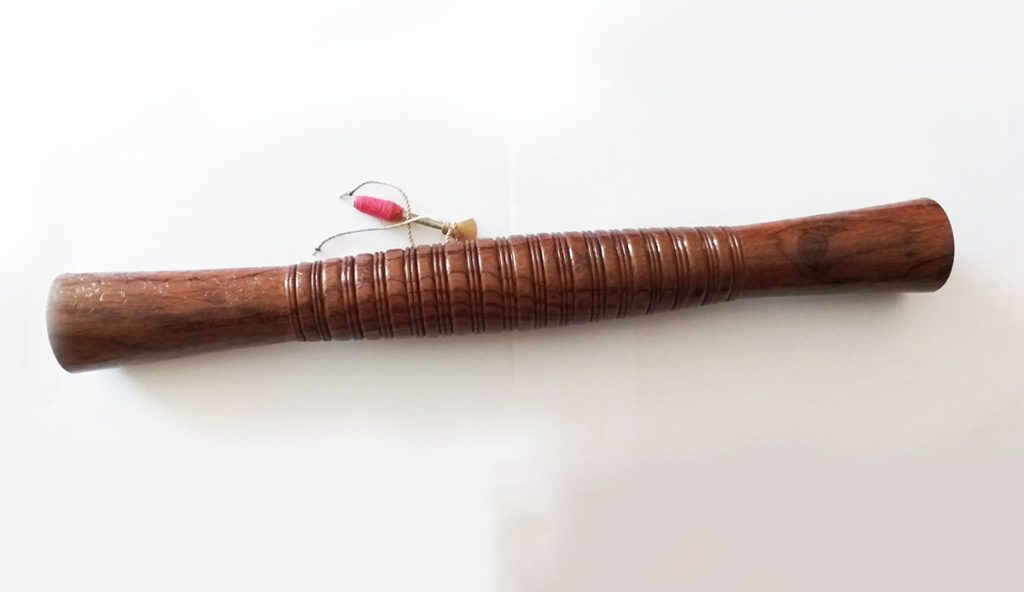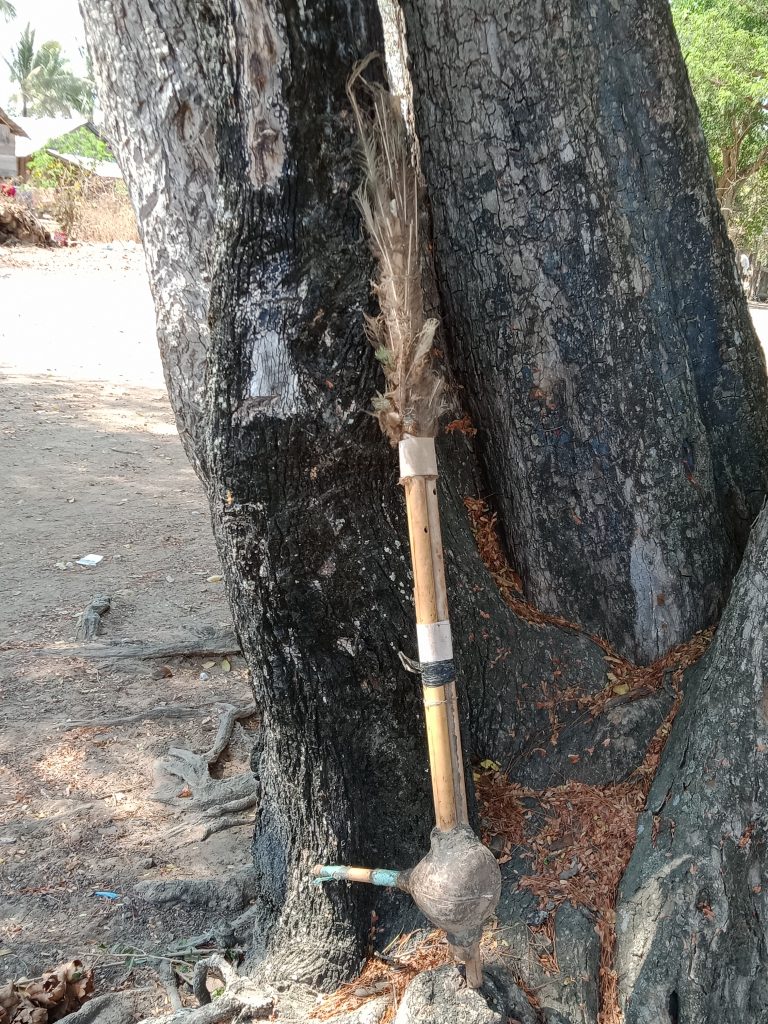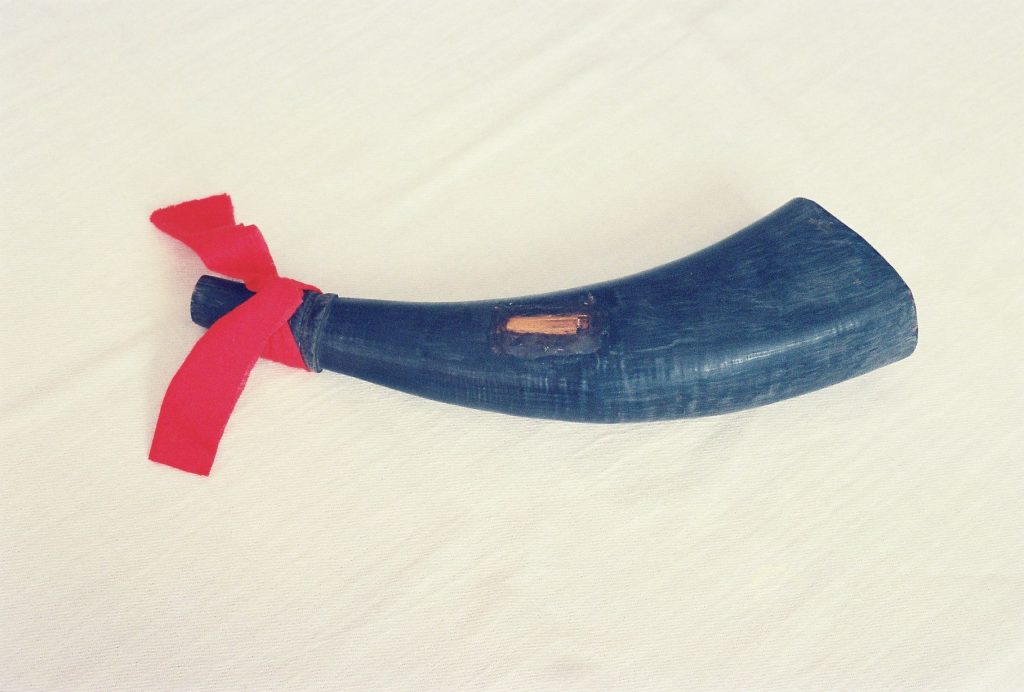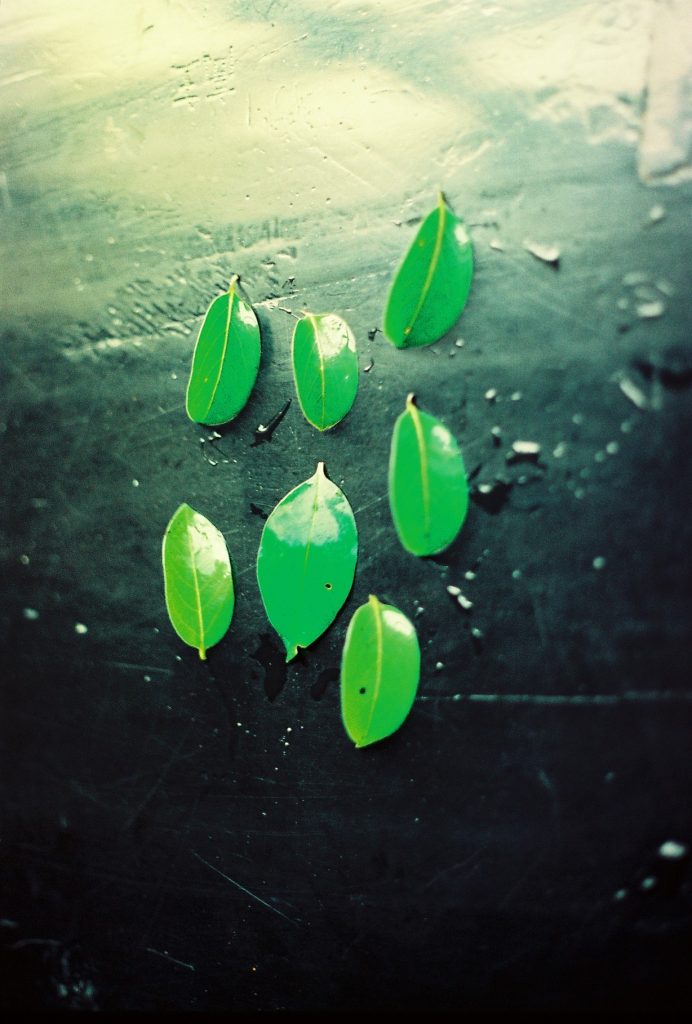តំបន់អាស៊ីដ៏ធំធេង មានវប្បធម៌អរិយធម៌រុងរឿងតាំងពីបុរាណកាល។ សិល្បៈល្ខោន របាំ និងតន្ត្រី ជាចំណែកសំខាន់មួយនិងវេញបញ្ចូលគ្នា នៅក្នុងជីវិតរបស់ប្រជាជន។ ប្រពៃណីនិងឧបករណ៍តន្ត្រីដ៏សម្បូណ៌បែប រួមមានទាំងគ្រឿងខ្សែ ដំ និងផ្លុំ។ នៅក្នុងអត្ថបទនេះ ខ្ញុំនឹងលើកយកតែ ឧបករណ៍តន្ត្រីគ្រឿងផ្លុំនៅកម្ពុជាមាន៖ ប៉ីពក ប៉ីប្របុស ស្រឡៃ ព្លយ គែន ស្នែង កង្កួច និងស្លឹកដែលមានអណ្តាតសេរី (Free-reed) អណ្តាត១ (Single-reed) អណ្តាត២ (Double-reed) និងអណ្តាត៤ (Quadruple-reed) មករៀបរាប់តែប៉ុណ្ណោះ។
ឧបករណ៍ប៉ីពក
ប៉ីពក គឺឧបករណ៍តន្ត្រី ផ្លុំពីចំហៀង ដោយមានអណ្តាតសេរី ដែលរលាស់ (ដោយគ្មានអ្វីទប់)។ តួរបស់ឧបករណ៍ ជាទូទៅ ធ្វើពីឫស្សីពក ដែលគេយកមកឱ្យជាឈ្មោះឧបករណ៍នេះ។ ប៉ីពក មានរន្ធសូរ ប្រើបិទបើកដោយ ម្រាមដៃចំនួន៧ និងរន្ធមេដៃ១។ អណ្តាតប៉ីពក ធ្វើពីសំរិទ្ធ ហើយដាក់នៅក្នុងរន្ធ ប្រមាណ ២.៥ សង់ទីម៉ែត្រ ពីខាងចុងនៃតួ។

ឧបករណ៍ប៉ីប្របុស ឬប៉ីអ
ប៉ីប្របុសឬប៉ីអ មានតួធ្វើពីឫស្សីឬឈើ។ អណ្តាត ធ្វើដោយរុក្ខជាតិទឹក មួយប្រភេទហៅថា «ប្របុស» ដែលគេយកមកឱ្យឈ្មោះឧបករណ៍នេះ។ តួរបស់ឧបករណ៍នេះ មានប្រវែងប្រមាណ ៣០ សង់ទីម៉ែត្រ ដែលមានរន្ធភ្នាស១ និងរន្ធម្រាមដៃ៧ចោះនៅផ្នែកខាងលើនៃឧបករណ៍។ អណ្តាតប៉ីប្របុស មានប្រវែង ប្រមាណ ៧ សង់ទីម៉ែត្រ ស៊កនៅចុងខាងលើនៃឧបករណ៍។ គេប្រើឧបករណ៍នេះ ជាចម្បង ពិសេសនៅក្នុងវង់ភ្លេងអារក្ខនិងវង់ភ្លេងការ ដោយក្នុងនោះ មានតួនាទីជាឧបករណ៍រឹតតម្រូវសំឡេង សម្រាប់ឱ្យឧបករណ៍ផ្សេងៗរឹតសំឡេង តាម។

ស្រឡៃ
ស្រឡៃ ជាឧបករណ៍តន្ត្រីគ្រឿងផ្លុំមួយដែលមានអាយុកាលចាស់ នៅក្នុង ចំណោមឧបករណ៍តន្ត្រីបុរាណខ្មែរ ដោយមានរូបចម្លាក់នៅលើជញ្ជាំងប្រាសាទ អង្គរវត្ត ថែវខាងជើងជាមួយនឹងឧបករណ៍តន្ត្រីបុរាណខ្មែរមួយចំនួនទៀត ជាតឹកតាង។ នាពេលបច្ចុប្បន្ន ខ្មែរយើងប្រើស្រឡៃតូចនិងស្រឡៃធំនៅក្នុងវង់តន្ត្រី ពិណពាទ្យ សម្រាប់កំដររបាំព្រះរាជទ្រព្យឬរបាំក្បាច់បុរាណ ល្ខោនខោល ល្ខោនស្បែក និងពិធីសាសនានិងប្រពៃណីផ្សេងៗ។
កម្ពុជា មានឧបករណ៍ស្រឡៃច្រើនប្រភេទ មានស្រឡៃតូច ស្រឡៃធំ ស្រឡៃជ្វា ស្រឡៃក្លងខែក (ស្រឡៃជ័យ) និងស្រឡៃត្រៃលក្ខណ៍។ តួស្រឡៃទាំងនេះ ធ្វើពីឈើបេង នាងនួន ក្រញូង ឈើស ឈើខ្មៅ ឆ្អឹង ឬភ្លុក ដែលមានប្រវែងប្រមាណ ២៥ ស.ម. (ស្រឡៃតូច) និង ៣០ ស.ម. (ស្រឡៃធំ)។ គេលុងចុងតួស្រឡៃ ម្ខាងខាងលើ ឱ្យមានរន្ធតូចមួយសម្រាប់ស៊កអណ្តាត និងម្ខាងទៀតខាងក្រោម រន្ធធំសម្រាប់ឱ្យខ្សល់ចេញ។ នៅលើខ្នងនៃតួស្រឡៃ គេចោះរន្ធសូរចំនួន៦ សម្រាប់ខ្ទប់បិទបើកដោយម្រាមដៃ ដើម្បីផ្លាស់ប្តូរសូរ។ ឯ «ពពួច» ឬអណ្តាតស្រឡៃ មានពីរចំណែកគឺ បំពង់និងអណ្តាត។ បំពង់ពពួចធ្វើពីស្ពាន់ ប្រាក់ ឬមាសក៏មាន ដែលមានប្រវែងប្រមាណ ៥ ស.ម. (ស្រឡៃតូច) និង ៦ ស.ម. (ស្រឡៃធំ)។ គេ យកស្លឹកត្នោតស្ងួតមកកាត់ ជាអណ្តាតតូចបួនស្រទាប់ ហើយចងភ្ជាប់ទៅនឹងបំពង់ដោយប្រើខ្សែអំបោះឆៅ វេញ។ នៅពេលសម្តែង អ្នកផ្លុំបៀមពពួចកប់ទៅក្នុងមាត់ ដោយទប់បបូរមាត់ ទៅនឹងតួស្រឡៃ។
នៅក្នុងវង់តន្ត្រីពិណពាទ្យវង់តូចគេប្រើតែស្រឡៃធំមួយតែប៉ុណ្ណោះ។ ចំណែកឯវង់តន្ត្រីពិណពាទ្យវង់ធំ គេប្រើស្រឡៃទាំងពីរ គឺស្រឡៃតូចនិងស្រឡៃធំ។ នៅក្នុងវង់តន្ត្រីកំដរកីឡាប្រដាល់សេរី គេប្រើវង់តន្ត្រីស្គរឈ្នះដែលមានស្រឡៃជ្វា ឬស្រឡៃក្លងខែក ដែលនៅខាងចុងឧបករណ៍មានមាត់រីកកញ្ឆាញដូចផ្កាត្រកួន។ ចំណែកឯវង់តន្ត្រីត្រៃលក្ខណ៍ ឬកន្ទាំមីង (ទាំមីង) គេប្រើស្រឡៃត្រៃលក្ខណ៍។ ជាពិសេសនៅខេត្តសៀមរាប ក្នុងតំបន់និងស្រុកសូត្រនិគមនិងស្រុកប្រាសាទបាគង គេនៅថែរក្សាបន្តនូវទំនៀមទម្លាប់ដ៏មានតម្លៃនេះរហូតមកដល់សព្វថ្ងៃ និងនៅប្រើ វង់តន្ត្រីនេះសម្រាប់កំដរពិធីសព។

ឧបករណ៍ព្លយ
ព្លយជាឧបករណ៍មានអណ្តាតរលាស់មួយប្រភេទ។ ចំនួននៃបំពង់ដែល ធ្វើពីឫស្សី មានចាប់ពី២ ៥ទៅ៧។ ប្រអប់សម្លេងរបស់ឧបករណ៍នេះធ្វើពីឃ្លោក ស្ងួត។ បំពង់នីមួយៗមានរន្ធម្រាមដៃមួយនិងអណ្តាត ហើយសំឡេងរបស់វាបន្លឺ ឡើង នៅពេលដែលអ្នកលេងបិទរន្ធម្រាមដៃ ដកដង្ហើមចូល រួចដកដង្ហើមចេញ តាមប្រហោងនៃឃ្លោកនោះ។

ឧបករណ៍គែន
ឧបករណ៍គែន ជាឧបករណ៍ផ្លុំមានអណ្តាតរលាស់មួយដែលយើង ឃើញមាននៅប្រទេសកម្ពុជា ថៃ និងឡាវ។ ឧបករណ៍នេះ មានបំពង់សំឡេង ធ្វើពីឫស្សីចំនួន២ជួរ (ប្រាំបី ដប់ពីរ ដប់បួន និងដប់ប្រាំមួយ។ល។) ដែលនីមួយៗមានអណ្តាតរលាស់ ធ្វើពីស្ពាន់ឬប្រាក់រៀងៗខ្លួន ភ្ជាប់ទៅនឹងប្រអប់ ខ្យល់មួយធ្វើពីឈើ។ គេប្រើក្រមួនឃ្មុំ ឬជ័រឈើទាល ដើម្បីភ្ជិតរន្ធផ្សេងៗក្នុងពេល ធ្វើឧបករណ៍។ បំពង់ឫស្សីនីមួយៗ មានរន្ធម្រាមដៃមួយ ដែលគេបិទដើម្បីបញ្ចេញ សំឡេង។
ឧបករណ៍គែននេះ ត្រូវបានលេងដោយបុរស (នាបច្ចុប្បន្ន ក៏មានស្រ្តីលេងដែរ) ដែលកាន់គែនទ្រេតបន្តិច បិទទប់ដោយដៃលើប្រអប់ខ្យល់។ ឧបករណ៍គែនបន្លឺសំឡេងឡើង ដោយការស្រូបដង្ហើមចូល ឬផ្លុំដង្ហើមចេញ ដែលអាចឱ្យមានលំហូរសូរតន្ត្រីបន្តជាប់មិនដាច់ ទោះបីជាមិនប្រើបច្ចេកទេស ផ្លុំមូល (Circular breathing) ក៏ដោយ។ ឧបករណ៍នេះ ត្រូវបានគេលេងជា ឧបករណ៍ទោលឬកំដរអ្នកច្រៀង។ ភាគច្រើន នៅប្រទេសកម្ពុជា គេប្រើឧបករណ៍គែនក្នុងរបាំប្រពៃណីដែលមានឈ្មោះដូចជាឈ្មោះឧបករណ៍ដែរ គឺរបាំគែន។

ឧបករណ៍ស្នែង
ឧបករណ៍គ្រឿងខ្យល់ដែលធ្វើពីស្នែងសត្វ (ក្របីឬគោបា) មានឈ្មោះថា ស្នែងឬខ្លុយស្នែង។ ឧបករណ៍នេះ មានខ្នាតខុសៗគ្នា តែ ជាទូទៅ មានប្រវែងប្រមាណ ៣០ សង់ទីម៉ែត្រ។ ចុងទាំង សងខាងរបស់ស្នែងត្រូវបានកាត់ ដើម្បីធ្វើជារន្ធម្រាមដៃ។ នៅចំកណ្តាលតួស្នែង មានរន្ធរាងចតុកោណកែងមួយ ដែលគេចោះ ដោយក្នុងនោះ មានដាក់អណ្តាតឫស្សីមួយ ហើយបិទភ្ជិត ជាមួយនឹងក្រមួនឃ្មុំ។ អ្នកលេងឧបករណ៍ស្នែង ផ្លុំនិងដកខ្យល់ ចេញចូលក្នុងរបៀបមួយស្រដៀងនឹងការលេងឧបករណ៍គែនឬអារម៉ូនីកា ទៅក្នុង រន្ធដែលចោះនោះ។

កង្កួច ឬអង្កួច
កង្កួច (ខ្មែរយើងច្រើនហៅថា «អង្កួច» ទៅវិញ) ជាឧបករណ៍តន្ត្រីមួយ ប្រភេទដែលគេឃើញមាននៅក្នុងតំបន់ផ្សេងៗនៃពិភពលោក ក៏ដូជជានៅក្នុង តំបន់អាស៊ីអាគ្នេយ៍ មានប្រទេសកម្ពុជាផងដែរ។
យើងគប្បីហៅឧបករណ៍តន្ត្រីនេះថា «កង្កួច» ព្រោះពាក្យ «កង្កួច» មានន័យថា «ស្រែករកគ្នា» ដែលអ្នកលេងកង្កួចប្រើដើម្បីទាក់ទងឬបញ្ជូនសារ ទៅគ្នា។ កង្កួច ធ្វើពីប្ញស្សីឬដែក មានអណ្តាត ហើយមានរាងត្រង់ឬកោងខាងចុង សងខាងដូចទូក។ កង្កួច មានបណ្តោយប្រវែងប្រមាណមួយចំអាម និងទទឹង ប្រមាណប៉ុនម្រាមដៃ។ បើធ្វើពីប្ញស្សី គេត្រូវយកប្ញស្សីឱ្យមានជាប់ថ្នាំងម្ខាង បិតឱ្យជបក្បាលបន្តិច។ បន្ទាប់ពីថ្នាំងមក គេត្រូវបិតឱ្យស្តើងរៀវទៅខាងចុង ហើយពុះចុងប្ញស្សីនោះជាបីភាគ ដោយទុកភាគកណ្តាលឱ្យលយវែងជាងគេ ហើយធ្វើឱ្យត្រមោងចុងបន្តិចដើម្បីធ្វើអណ្តាត។ គេបិតអណ្តាតឱ្យស្តើង ដើម្បីឱ្យផ្លុំ ទៅឮសូររលាស់ល្អ។ បើធ្វើពីដែក គេក៏ធ្វើប្រហាក់ប្រហែលគ្នានឹងប្ញស្សីដែរ ខុសតែរាងរៅបន្តិច។

ស្លឹក ស្លឹក គឺសឹ្លកឈើដែលគេប្រើជាឧបករណ៍តន្ត្រីមួយដែរ។ អ្នកលេង ជ្រើសរើសរកសឹ្លក ដែលរឹងនិងក្រាស់ល្មមសម្រាប់រលាស់ឱ្យមានរំញ័រ។ ក្នុងនោះ មានស្លឹកដើមលំពួស ពួច និងក្រវ៉ាន់។ អ្នកលេងយកស្លឹកមួយមកបត់ជាផ្នត់ ទៅតាមប្រវែងរបស់ស្លឹកនោះ ហើយដាក់ស្លឹកនៅចន្លោះបបូរមាត់ រួចផ្លុំតាមផ្នត់ ដែលបានបត់នោះ។ គេប្រើស្លឹកនៅក្នុងវង់ភ្លេងការ ឬជួនកាល លេងជាទោល។ នៅក្នុងភូមិស្ថានវាលស្រែចម្ការក្នុងជីវិតកសិករខ្មែរ ស្លឹកនេះត្រូវបានអ្នកឃ្វៀលគោ ឬអ្នកប្រមាញ់លេងដើម្បីធ្វើត្រាប់តាមសម្លេងសត្វ ទាក់ទងគ្នា ឬកែកម្សាន្ត៕

—————————————–
REED-AEROPHONES OF CAMBODIA
The large region of Asia endows a rich culture which dates back to the Neolithic times. Dance, theater, and music, for instance, are an integral part and inherently interwoven fabrics of our lives ever since. These music traditions encompass a multitude of chordophones, idiophones, membranophones, and aerophones. Aerophones of Asia are ubiquitous, coming in different types, names, sizes, and number of tubes and reeds.
In this article, I shall allude to the reed-aerophones of Cambodia, namely, pey pork, pey prabauh, sralai, ploy, ken, kangkuoch, and slekk. They are free-reed, single-reed, double-reed, and quadruple-reed instruments.
Pey Pork
Pey pork is a side-blown single free-reed pipe. The player places the part of the instrument (reed-side) in the mouth horizontally and blows into it. The body is made of, generally, bamboo called “pork” from which it takes its name. There are seven fingerholes and one thumbhole. The reed is made of bronze and placed in a hole approximately 1 inch from the end of the body. The range of the pey pork is a little over an octave.
Pey pork is used in the arakk (Worship of spirit) ensemble but is mostly found performed as a solo instrument, or an accompanying instrument to a vocalist.
Pey Prabauh
Also known as pey a, the pey prabauh has its body made of bamboo or wood. The reed or tongue (loam or andat in Khmer) is made of an aquatic plant called prabauh, from which the instrument takes its name. Its body measures approximately 12 inches on which one membrane-hole and seven fingerholes are drilled. The reed is approximately 3 inches, one end placed into the upper end of the instrument, while the other end is shaved so it can vibrate. It is principally used in the arakk and kar (wedding) ensembles in which it functions as the tuning fork to which other instruments are tuned.
Sralai
Sralai is an old Khmer quadruple-reed shawm. Scholars, writing about this type of instrument, often refer to it as an oboe. In Cambodia, the origin of shawms can be traced back to at least the Angkor period (9th-15th centuries). On the north gallery of the Angkor Vatt temple, along with other musical instruments, the sralai was carved. Today, it is used in the pinn peat ensemble to accompany the Khmer court dance, masked play, puppetry, religious ceremonies, as well as in the free-style boxing ensemble.
There are several types of sralai in Cambodia, namely, sralai tauch, sralai thomm, sralai chvea, sralai klang khaek, and sralai trai leak. The body of the sralai is made of hard wood, bone, or ivory. The reeds have two parts: the tube and the tongue. The tube is made of bronze, brass, silver, or sometimes gold. It is tapered—the end that fits into the top of the instrument is a little bit larger than the other end to which the four little tongues are fastened. This larger end is wound with threads for a tight fit when being inserted into the instrument. To play, the entire reed (tube and tongue) is placed in the mouth with the player’s lips resting against the instrument. The reeds are made of palm leaves cut into four little tongues and fastened to the tube with thread. The length of the reeds varies, approximately 5 centimeters for the small shawm and approximately 6 centimeters for the large one. The body length of the small shawm is approximately 25 centimeters and the large one is 30 centimeters.
A complete formation of the pinn peat ensemble includes both of the shawms—the small and big ones. The free-style boxing ensemble uses the sralai chvea or sralai klang khaek, whereas the kamtoam ming or toam ming ensemble used the sralai trai leak.
Ploy
Ploy is a free-reed instrument. The number of pipes, made of bamboo, varies from two, five to seven. Its resonator box is made from dried gourd. Each of the pipes has one fingerhole and reed, and sounded when the player covers the fingerhole, inhales, and exhales through the opening of the gourd.
Ken
Ken is a mouth organ found in Cambodia, Thailand, and Laos. It consists of two rows of fixed-pitched bamboo pipes (eight, twelve, fourteen, and sixteen, etc.), each with its own free reed of copper or silver, connected by an air reservoir made of carved wood. The whole instrument varies in length. A kind of bee-wax or gum-lack is used to seal any holes in the construction. Each bamboo pipe has a fingerhole, which is covered to cause that pipe to sound.
The ken, exclusively played by men (today, women also play the ken), is held slightly tilted with hands cupped over the air chamber. It can be sounded by either inhaling or exhaling, allowing for a continuous musical flow even without the circular breathing technique. It is traditionally played either solo or as an accompaniment to singing. In Cambodia, it is mostly used in folk dance of the same name.
Snaeng
An aerophone made of an animal horn (buffalo or ox) is called snaeng or khloy snaeng (Pich 1970: 23). It comes in different sizes, but the most commonly found is approximately 12 inches. The horn is cut at both ends, which serve as fingerholes. In approximately the middle of the horn, a rectangular hole is made in which a bamboo reed is placed and sealed with bee-wax. The player blows (inhaling and exhaling in the manner similar to playing a harmonica) into this hole.
Kangkuoch or Angkuoch
Kangkuoch, also called angkuoch, is a jaw’s harp found in various parts of the world, including Cambodia. The Khmer jaw’s harp is made of bamboo or metal with a straight or curved end, like a boat, of a tongue or lamella. The Khmer jaw’s harps come in various shapes and sizes. They are mostly used as solo instruments to imitate bird-sounds, to communicate with one another by forest-travelers or lovers, or for mere self-enjoyment.
Slekk
Slekk is a tree leaf. The player selects a leaf, which is stiff and thick enough being free to vibrate, including the leaf of lumpuoh, puoch, or kravann. The player picks a leaf, folds the edge along its length, and places it in between his lips and blows over the folded edge. It is used in the wedding ensemble or most often as a solo instrument. In the village, the leaves are played by cattle herders or hunters to imitate the animal cries, to communicate, or for mere self-entertainment.
អត្ថបទដើម៖ បណ្ឌិត សំ សំអាង






